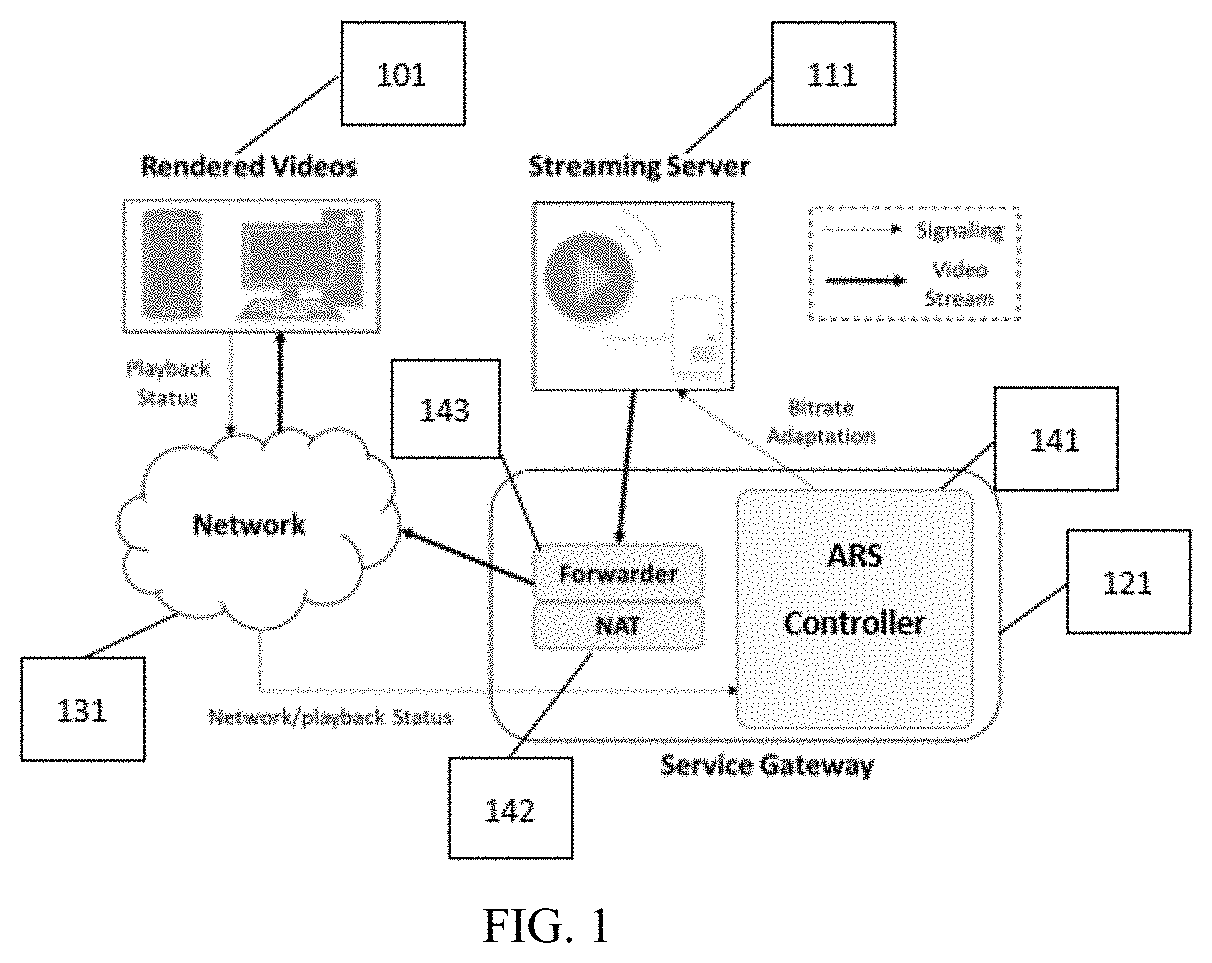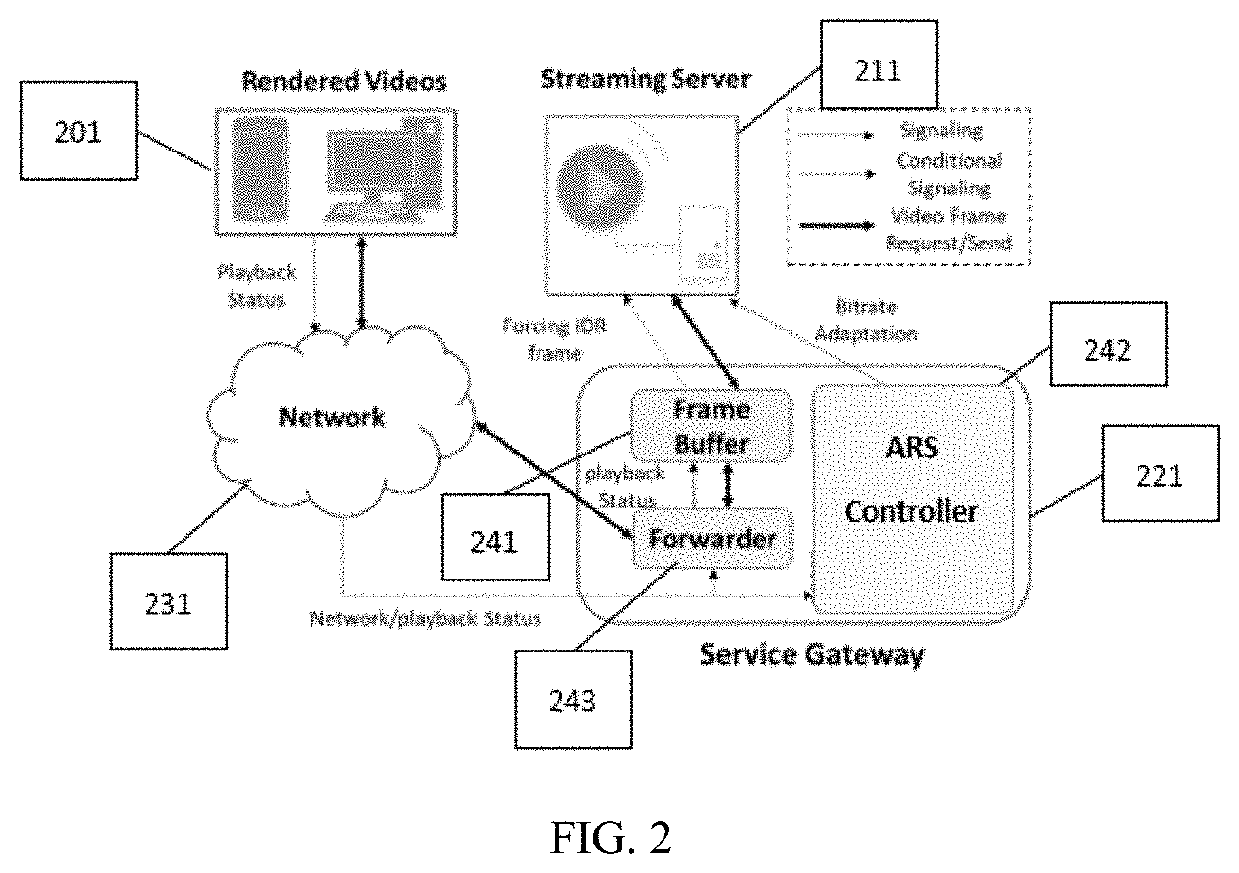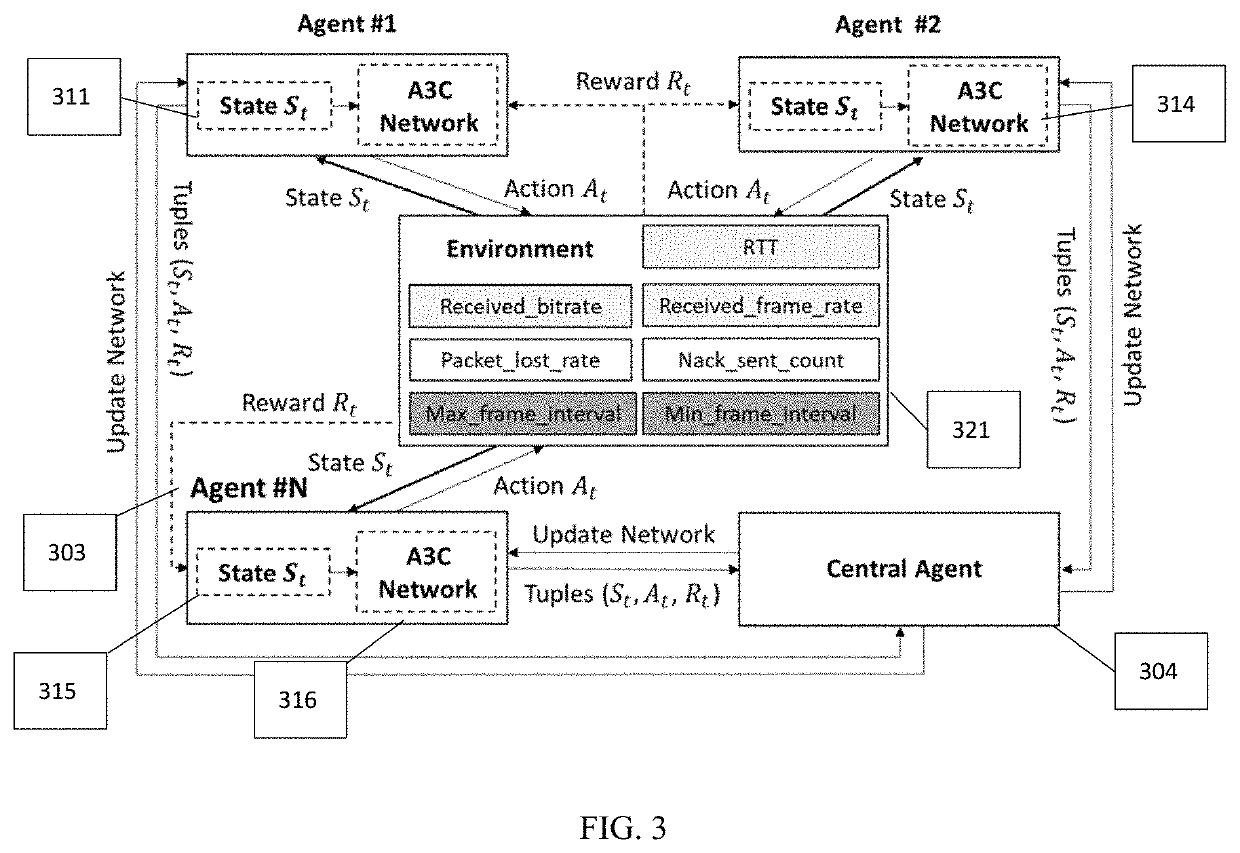Methods and Apparatus for Learning Based Adaptive Real-time Streaming
a real-time video and learning technology, applied in the field of adaptive real-time video streaming, can solve the problems that the training speed of the training algorithm the rate-based learning-based abr algorithm for http protocols is not suitable for low-delay/real-time video scenarios, and the granularity of the tunnel level is not suitable for real-time video streaming. achieve the effect of accelerating the training speed
- Summary
- Abstract
- Description
- Claims
- Application Information
AI Technical Summary
Benefits of technology
Problems solved by technology
Method used
Image
Examples
Embodiment Construction
[0028]FIG. 1 illustrates an embodiment of an end-to-end process and system of streaming a real-time video using ARS over UDP. FIG. 2 illustrates an embodiment of an end-to-end process and system of streaming a real-time video using ARS over TCP. As shown in FIGS. 1 and 2, after the video session is established, a Streaming Server (video server) 111 / 211 first streams a compressed video to a Service Gateway 121 / 221, which is responsible to forward the video stream to a user end 101 / 201 through the Network 131 / 231. The user end 101 / 201 periodically returns its playback status and current network Quality of Service (QoS) parameters to the Service Gateway 121 / 221. The Service Gateway 121 / 221 includes a Forwarder 143 / 243 and an ARS Controller 141 / 242. The Streaming Server 111 / 211 transforms videos to be streamed into a binary bit stream and sends the stream to the Forwarder 143 / 243 through the Network 131 / 231. The user end 101 / 201 sends back the playback status to the ARS Controller 141 / 2...
PUM
 Login to View More
Login to View More Abstract
Description
Claims
Application Information
 Login to View More
Login to View More - R&D
- Intellectual Property
- Life Sciences
- Materials
- Tech Scout
- Unparalleled Data Quality
- Higher Quality Content
- 60% Fewer Hallucinations
Browse by: Latest US Patents, China's latest patents, Technical Efficacy Thesaurus, Application Domain, Technology Topic, Popular Technical Reports.
© 2025 PatSnap. All rights reserved.Legal|Privacy policy|Modern Slavery Act Transparency Statement|Sitemap|About US| Contact US: help@patsnap.com



